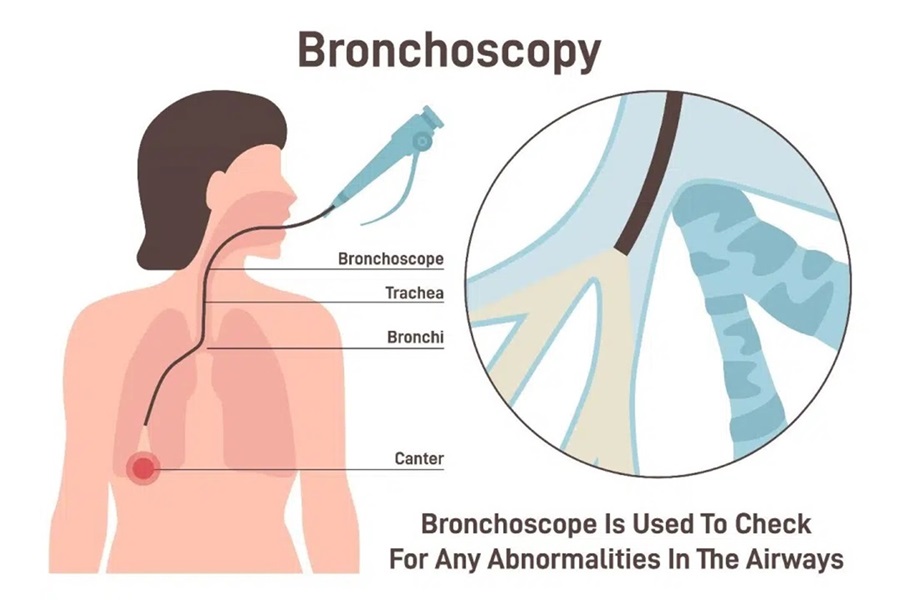
Bronchoscopy is a medical procedure used to examine the airways and lungs. It involves inserting a thin, flexible tube called a bronchoscope through the nose or mouth into the lungs. Equipped with a camera and light, the bronchoscope provides a clear view of the airways, allowing pulmonologists to detect abnormalities, collect tissue samples, and even perform certain treatments.
Bronchoscopy is recommended when a patient has persistent symptoms like unexplained coughing, chronic lung infections, or abnormal chest X-rays or CT scans. It is also performed to investigate the causes of airway blockages, bleeding, or the presence of foreign objects. Doctors may recommend bronchoscopy for diagnosing lung cancer, infections, or inflammatory conditions and for monitoring the progression of certain lung diseases.
Bronchoscopy provides detailed visualization of the airways, making it an invaluable tool for diagnosing and managing complex respiratory conditions. It allows for precise tissue biopsies, enabling accurate diagnosis of diseases such as cancer or tuberculosis. The procedure can also be therapeutic, allowing doctors to remove blockages, extract mucus plugs, or administer targeted treatments directly into the lungs. With minimal invasiveness, bronchoscopy ensures accurate and timely medical intervention.